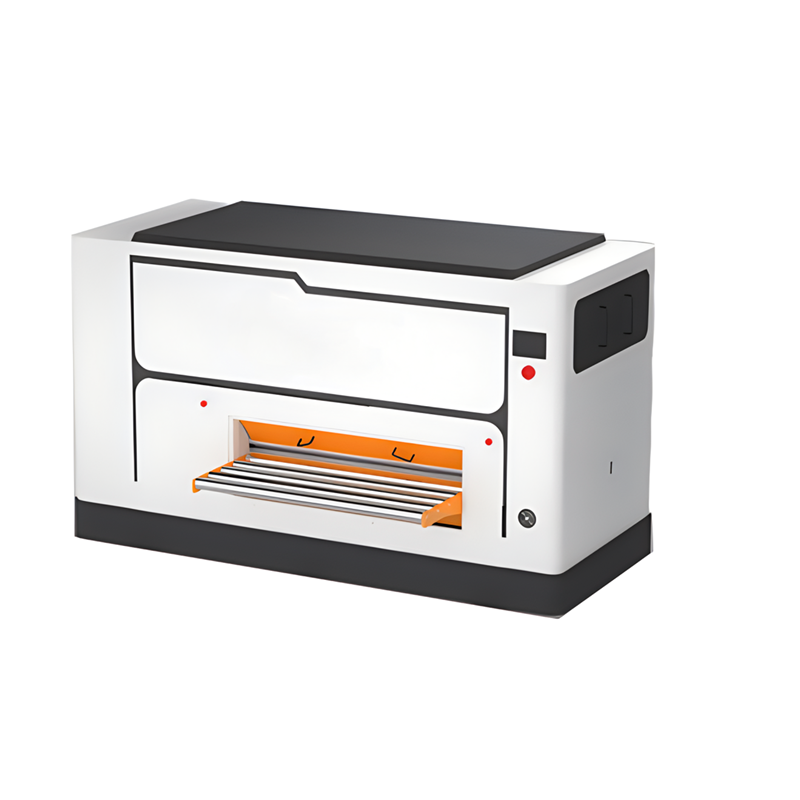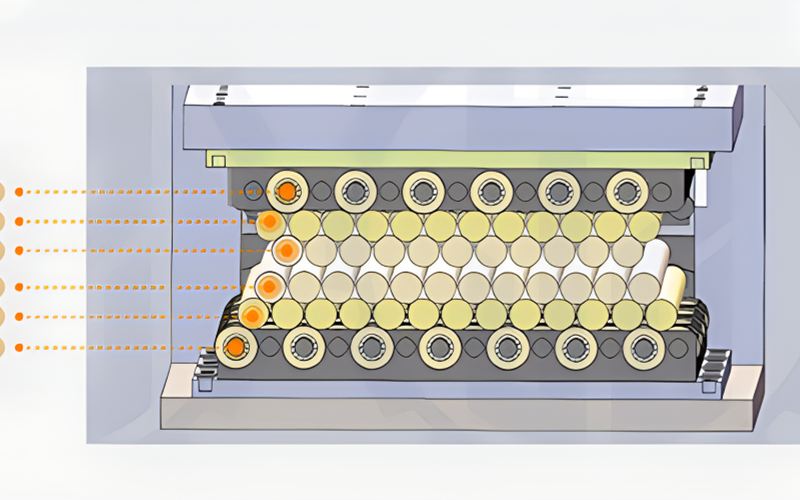Sheet Metal and Heavy Plate Flattening and Parts Leveling Machine (3-12 mm)
In modern manufacturing, precision and flatness are crucial for ensuring that metal parts meet the stringent requirements of various industries, including automotive, aerospace, construction, and heavy machinery. Materials such as laser-cut, plasma-cut, and punched parts often suffer from warping, distortions, or residual stresses due to the heat or mechanical forces involved in the cutting and punching processes. These deformations can affect the material’s performance, appearance, and fitment in subsequent processes like welding, assembly, or coating.
The sheet metal and heavy plate flattening and parts leveling machine is designed to correct these issues by applying controlled pressure to flatten and straighten metal sheets and plates, particularly those in the 3 mm to 12 mm thickness range. This machine is essential for industries that work with laser cut, plasma cut, and punched metal parts where maintaining flatness and precision is paramount.

Key Features of the Leveling Machine
1. Material Thickness Range: 3 mm to 12 mm
The leveling machine is optimized for processing materials with thicknesses ranging from 3 mm to 12 mm, which includes a wide array of metal sheets, plates, and parts. This range is particularly useful for industries that deal with heavy-duty materials, including those used in the production of automotive panels, construction materials, and structural components.
For thinner materials (3-6 mm), the machine applies moderate pressure to remove distortions and ensure flatness.
For heavier plates (6-12 mm), the machine uses higher pressure and robust rollers to flatten thicker, more rigid materials effectively without compromising the integrity of the metal.
2. Passage Widths Available: 400 mm to 2200 mm
The machine is available in a variety of passage widths, making it suitable for a range of metal sizes. These passage widths range from 400 mm to 2200 mm, ensuring versatility in handling everything from small parts to large plates. The availability of various widths allows manufacturers to tailor their operations to the size and volume of parts they need to process.
Narrow widths (400 mm, 600 mm) are suitable for smaller, more delicate parts or components.
Wider widths (1000 mm, 1200 mm, 1400 mm, 1600 mm, 1800 mm, 2000 mm, 2200 mm) can accommodate larger parts, making the machine suitable for heavy-duty applications, such as construction panels, large automotive components, and industrial plates.
3. Materials Processed
The machine is capable of leveling a wide variety of materials, including:
Laser Cut Parts: Laser cutting is often used to create precise edges, but the intense heat involved can cause thermal distortions in the material. The leveling machine removes these distortions, ensuring the part is flat and suitable for further processing.
Plasma Cut Parts: Plasma cutting can also lead to edge roughness and residual stresses in the material. This machine effectively flattens plasma cut parts, ensuring they are ready for welding, coating, or assembly.
Punched Parts: Punched parts may have edge deformations or residual stresses that can interfere with further fabrication. The leveling machine corrects these distortions, ensuring a consistent, flat surface for subsequent operations.
Sheets and Plates: The leveling machine works efficiently with both thin sheets and thicker plates. Whether dealing with thin sheets (3-6 mm) or thicker plates (6-12 mm), the machine ensures that each part is leveled to meet high-quality standards.
4. Roller Leveling System
At the heart of the leveling machine is the roller leveling system. This system consists of multiple upper and lower rollers that apply controlled pressure to the material as it passes through the machine. The rollers are designed to straighten and flatten the material by gradually bending it in the opposite direction of any deformations.
The roller gap can be adjusted based on the material thickness, ensuring that the machine applies just the right amount of force for optimal results.
For thicker materials, the machine uses more powerful rollers to apply higher levels of pressure, ensuring that the material is properly flattened without causing damage.
This method of leveling, combined with precise gap control, results in highly accurate flatness and minimal residual stress in the material.
5. Adjustable Pressure Control
The leveling machine incorporates an adjustable pressure control feature, which allows operators to fine-tune the pressure applied to the rollers. By adjusting the pressure based on the thickness and material type, the machine ensures that the correct force is applied to flatten the metal part without over-straightening it. This feature helps maintain the material's structural integrity while ensuring it meets flatness specifications.
6. Speed and Efficiency
The machine is designed for efficiency, with variable speed control allowing manufacturers to adjust the speed of the leveling process based on the material and application. Feed speeds can range from 0 to 12 meters per minute, depending on the thickness and type of material being processed. Faster speeds are typically used for thinner materials, while slower speeds are used for thicker plates that require more precise leveling.
With the ability to process materials at various speeds, the machine balances high throughput with precision, making it ideal for both small-batch and high-volume production runs.
7. Heavy-Duty Construction
Given the robust nature of the materials it processes, the leveling machine is constructed with heavy-duty components to withstand the stress and demands of industrial metalworking environments. The roller assembly is made from high-strength materials designed for long-lasting performance, and the frame is engineered to handle large, heavy plates without compromising stability or accuracy.
This construction ensures that the machine remains reliable and durable, even in demanding operations, making it a cost-effective solution for manufacturers dealing with heavy plate and sheet metal leveling tasks.


How the Leveling Machine Works
The sheet metal and heavy plate leveling process involves several key steps:
Material Feeding
The material (laser-cut, plasma-cut, or punched parts) is first loaded into the machine through the entry rollers. The rollers ensure that the material is fed straight and aligned as it enters the leveling section.
Flattening with Roller Assembly
Once the material is in position, it passes through the roller assembly. The upper and lower rollers apply controlled, opposing forces to gradually flatten the material. The machine is equipped with an adjustable roller gap that can be modified based on the material's thickness, ensuring that the correct amount of pressure is applied at every stage of the leveling process.
Pressure Adjustment
During the flattening process, the pressure control system continuously adjusts the amount of force applied by the rollers. For thicker plates (6-12 mm), higher pressure is applied, while for thinner sheets (3-6 mm), the pressure is reduced to prevent over-straightening.
Material Exit and Inspection
Once the leveling process is complete, the material exits the machine. Some leveling machines include an inspection system to check the flatness of the parts after processing. If necessary, the machine can be adjusted for further corrections to achieve the desired flatness.
Final Product
The leveled parts are now ready for subsequent processes, such as welding, coating, or assembly. The high precision achieved by the leveling machine ensures that these parts will fit together properly in their final application, whether they are used in construction, automotive manufacturing, or industrial machinery.


Industries and Applications
The sheet metal and heavy plate leveling machine is essential in a variety of industries where metal parts must meet stringent flatness and quality standards. Some key applications include:
Automotive Manufacturing: Ensuring that body panels, chassis, and structural components are flat and precise for assembly and welding.
Aerospace: For leveling critical structural components that must meet exacting standards for safety and performance.
Heavy Equipment Manufacturing: To process large plates and sheets used in the construction of industrial machinery, vehicles, and other heavy-duty equipment.
Construction: For leveling large steel plates used in building construction, structural frames, and other applications that require precision flatness.
Metal Fabrication: Ideal for leveling laser-cut, plasma-cut, and punched parts to ensure they are ready for further fabrication, welding, or assembly.





















